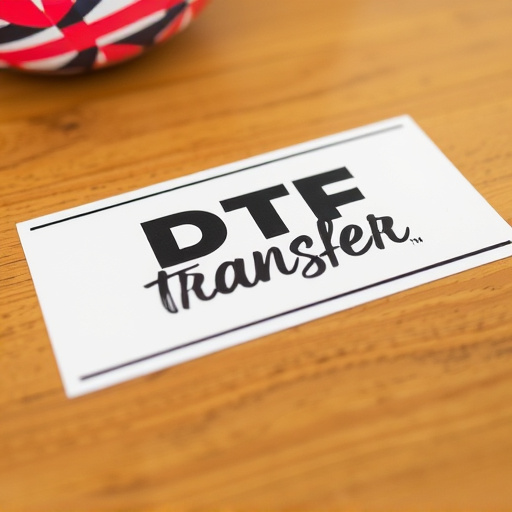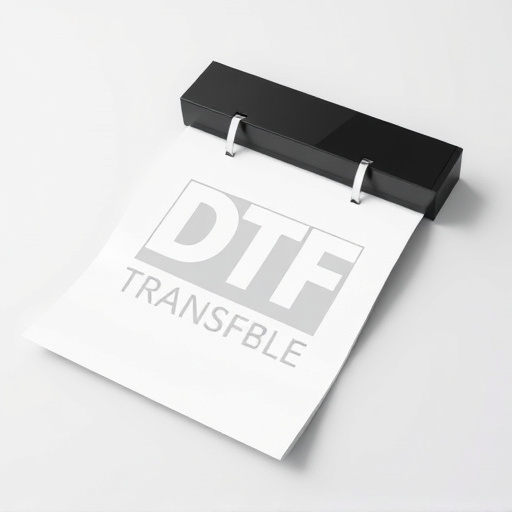Mastering DTF Transfer: Optimal Temp Settings for Crystal-Clear Prints
TL;DR:Direct to Film (DTF) transfer technology offers a revolutionary way to preserve memories with…….
In the dynamic world of industrial technology, precise control over thermal processes is paramount. One critical aspect that has garnered significant attention is the DTF (Direct-to-Form) heat press temperature. This innovative technique has revolutionized various industries, offering unprecedented efficiency and versatility in material processing. The article aims to delve into the intricacies of DTF heat press temperature, exploring its definition, global impact, economic implications, technological strides, regulatory landscape, challenges, real-world applications, and future prospects. By the end, readers will gain a comprehensive understanding of this transformative technology and its role in shaping industrial practices.
DTF heat press temperature refers to a specialized thermal bonding process used in various manufacturing and packaging industries. It involves applying direct heat to a material, typically a thin film or substrate, using a heated press. The key components of this process include:
Heat Press Machine: A sophisticated piece of equipment that generates controlled pressure and temperature. It consists of a heating element, a pressure mechanism, and a timing system to ensure precise control over the bonding process.
Material Substrates: These can vary widely, including films, foils, papers, and fabrics. The choice of substrate depends on the intended application, such as packaging, labeling, or decorative purposes.
Heat-Activatable Adhesives: Specialized adhesives designed to activate at specific temperatures, ensuring strong bonding when pressed against the material substrate.
The concept of heat press temperature has its roots in traditional printing techniques, where heat was used to transfer ink onto materials. However, modern DTF technology emerged as a game-changer in the late 20th century with advancements in materials science and precision engineering. Its significance lies in several key areas:
Versatility: DTF allows for the creation of intricate designs and patterns on various materials, making it suitable for decorative, functional, and structural applications.
Efficiency: The process is highly efficient, offering quick production times and minimizing material waste compared to traditional printing methods.
Customizability: It enables on-demand customization, allowing manufacturers to produce personalized products with unique designs and features.
Environmental Benefits: DTF heat press temperature can contribute to sustainability efforts by reducing the need for excessive adhesive usage and minimizing material scrap.
DTF heat press temperature has transcended geographical boundaries, finding applications across diverse industries worldwide. Its global impact is evident in several trends:
North America: The United States and Canada have been early adopters of DTF technology, particularly in the packaging, apparel, and signage industries. Major companies are investing in advanced heat press machines to enhance their production capabilities.
Europe: European countries, especially Germany and the UK, are known for their precision engineering and materials innovation. DTF has gained traction in these regions, with a focus on high-quality printing and packaging solutions.
Asia Pacific: China, Japan, and South Korea are significant players in the global manufacturing landscape. The adoption of DTF heat press temperature has been robust, driven by the region’s booming electronics, automotive, and consumer goods sectors.
Across industries, DTF is making waves:
The economic implications of DTF heat press temperature are multifaceted, impacting various sectors and market dynamics.
Industries directly adopting DTF heat press temperature experience notable economic advantages:
| Industry | Benefits |
|---|---|
| Packaging | Reduced production costs, enhanced product presentation, and improved brand differentiation. |
| Textile Printing | Increased order volume for custom clothing, expanded market reach, and potential for higher profit margins. |
| Automotive | Streamlined interior trim production, reduced material waste, and improved design flexibility. |
The continuous evolution of DTF technology is driven by advancements in materials science, engineering, and automation.
The fusion of DTF with digital printing technologies has opened new possibilities:
As DTF heat press temperature gains popularity, regulatory bodies worldwide are establishing guidelines to ensure safe and responsible usage.
Despite its numerous advantages, DTF heat press temperature also presents certain challenges that must be addressed:
Initial Setup Costs: Implementing DTF technology requires significant upfront investment in specialized equipment and training, which can deter small businesses.
Material Compatibility: Not all materials are suitable for DTF, and finding the right adhesive for specific substrates can be challenging. Proper material testing is crucial.
Design Complexity: While DTF offers versatility, creating intricate designs that meet precision standards can be technically demanding and may require advanced software and expertise.
Temperature Control: Maintaining precise temperature control during the bonding process is critical to ensure consistent quality. Any deviation can lead to defective products.
DTF heat press temperature has left its mark on various industries, as evidenced by successful implementation cases:
A small clothing startup utilized DTF to offer personalized apparel designs. They could produce unique patterns on demand, attracting customers seeking one-of-a-kind fashion pieces. This strategy helped them stand out in the market and gain a loyal customer base.
A sign manufacturing company adopted DTF for large-format printing on acrylic sheets. The technology enabled them to produce vibrant, high-resolution signs for commercial spaces, outperforming traditional printing methods in terms of speed and quality.
A food packaging company replaced conventional adhesives with eco-friendly alternatives in their DTF process. This reduction in environmental impact enhanced their brand image and appealed to environmentally conscious consumers.
The future of DTF heat press temperature looks promising, with ongoing innovations poised to reshape industries further.
In conclusion, DTF heat press temperature has evolved from a specialized technique to a powerful tool across various sectors. With ongoing technological advancements, regulatory considerations, and growing market demands, the future of DTF appears bright, offering endless possibilities for innovation and customization.

TL;DR:Direct to Film (DTF) transfer technology offers a revolutionary way to preserve memories with…….

The Direct-to-Film (DTF) process allows for creative applications of vintage or special effect films…….

Direct-to-Film (DTF) transfer preserves vintage film quality by directly copying content onto new st…….

Optimizing temperature settings for DTF (Direct-to-Film) printing is crucial for achieving high-qual…….

DTF (Direct-to-Film) prints require careful temperature management during application. Extreme heat…….

DTF (Direct-to-Film) Printing offers high-quality transfers by applying ink directly to film, with i…….